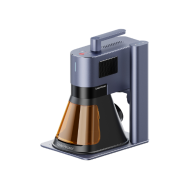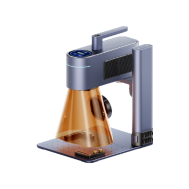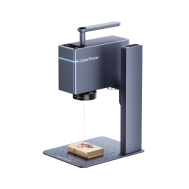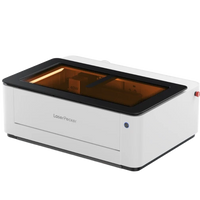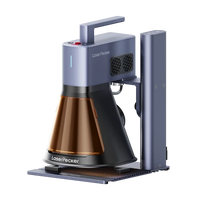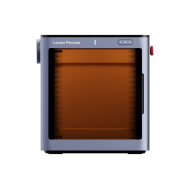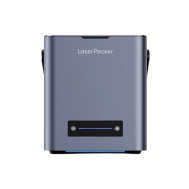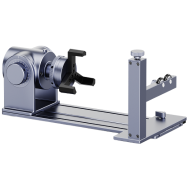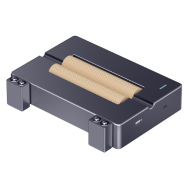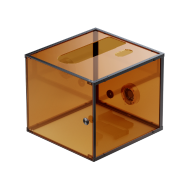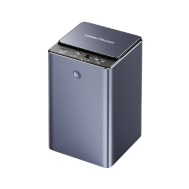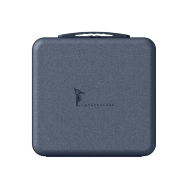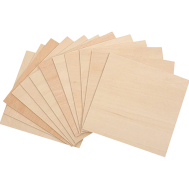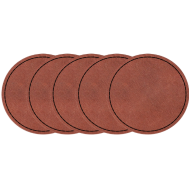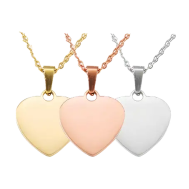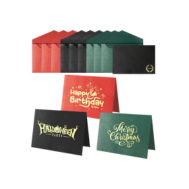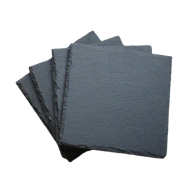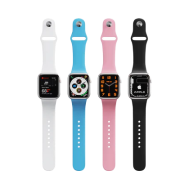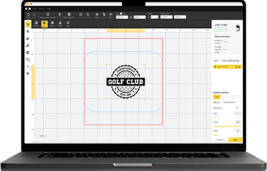Jeans have always been a timeless wardrobe essential—not just for their versatility, but for their potential to reflect personal style. With the right technique, you can transform plain denim into a statement piece that's uniquely yours.
In this guide, we'll explore some of the most popular ways to customize jeans and reveal why laser engraving is redefining the future of denim design.

In this article:
- Part 1: Six Creative DIY Ways to Customize Jeans
- Method 1: Embroidery
- Method 2: Heat Transfer
- Method 3: Hand-Painting & Fabric Paints
- Method 4: Distressing & Sanding
- Method 5: Fabric Patching
- Method 6: Laser Engraving
- Part 2: Tips for Getting Custom Jeans Made
- FAQs Common Questions About Making Custom Jeans
Part 1: Six Creative DIY Ways to Customize Jeans
Customizing jeans is one of the best ways to express your creativity and make a fashion statement that's truly personal. Whether you prefer a handmade look or a clean, high-tech finish, there's a method for every style and skill level. Here are six practical and creative ways to transform plain denim into something uniquely yours.
Method 1: Embroidery
Embroidery adds a timeless, handcrafted touch to denim. You can stitch flowers, initials, patterns, or even small symbols to create texture and charm. This method works best on thicker areas like pockets or hems where the fabric can hold the stitches firmly. It's a bit time-consuming but offers a rich, detailed look that never goes out of style.
Pros: Adds texture and dimension; designs are long-lasting and resistant to fading; carries a strong handmade vibe.
Cons: Time-intensive; complex patterns require skill and patience.
Best for: Those who appreciate traditional craftsmanship and artisanal details.
Method 2: Heat Transfer
Perfect for bold designs and logos, heat transfer lets you apply printed graphics or vinyl patterns directly onto denim using a heat press or household iron. It's ideal for clean, modern looks—just be sure to use even heat and pressure for smooth, long-lasting results.
Pros: Simple and beginner-friendly; materials are affordable and widely available.
Cons: May peel or fade after repeated washing; limited lifespan.
Best for: DIY newcomers looking for quick, fun results.
Method 3: Hand-Painting & Fabric Paints
For artists at heart, fabric paints are an open canvas. You can paint freehand designs, gradient effects, or abstract art directly onto your jeans. Acrylic-based fabric paints work best for denim; just remember to let the paint dry completely and heat-set it to prevent fading.
Pros: The most artistic and personal approach—every piece can be truly one-of-a-kind.
Cons: Paint may crack or fade over time;it requires touch-ups and special care.
Best for: Artistic individuals who see jeans as a creative canvas.
Method 4: Distressing & Sanding
Distressing gives jeans a trendy, worn-in appearance that never loses appeal. Use sandpaper, a razor, or a pumice stone to gently roughen specific areas like knees or thighs. You can also cut small slits or fray the edges for a more vintage look. Go slow—subtle distressing usually looks better than overdoing it.
Pros: Creates an edgy, vintage, or streetwear look; very popular in youth fashion.
Cons: Irreversible process; may weaken the fabric and shorten the jeans' lifespan.
Best for: Trendsetters who love a raw and rugged style.
Method 5: Fabric Patching
Fabric patches add contrast, texture, and personality to your jeans. Use denim patches for a classic, rugged vibe or colorful prints for a playful twist. Iron-on patches are quick to apply, while sewn patches are more durable. This is also a great way to repair torn jeans creatively.
Pros: Bold and layered look; allows mixing fabrics like leather, plaid, or prints.
Cons: Needs sewing skills to look polished; otherwise they may appear uneven or loose.
Best for: DIY enthusiasts who enjoy upcycling and reconstruction projects.
Method 6: Laser Engraving (High-Tech Option)
Laser engraving brings technology and precision into denim design. Using a laser engraver for jeans like LaserPecker LP2 Plus, you can etch text, logos, or detailed artwork directly onto the fabric. The laser lightly burns the surface, creating a clean, permanent pattern without fading or bleeding. It's perfect for intricate designs and gives jeans a modern, futuristic edge.

Pros:
- Extremely detailed, ideal for complex designs
- Eco-friendly—no inks or threads required
- Highly durable; resistant to fading
- Accurate placement on different parts of the jeans
Cons:
- Permanent, cannot be undone
- Eco-friendly—no inks or threads required
- Works best on darker denim; less contrast on light fabrics
| Method | Cost | Best For | Skill Level |
|---|---|---|---|
| Embroidery | Low–Medium (thread & hoop tools) | Decorative details, names, patches | Medium |
| Heat Transfer | Medium (vinyl sheets or printer + heat press) | Logos, photos, bold graphics | Easy–Medium |
| Hand-Painting & Fabric Paints | Low (brushes & fabric paints) | Artistic, gradient, or custom illustrations | Easy–Medium |
| Distressing & Sanding | Very Low (scissors, razor, or sandpaper) | Vintage style, subtle wear, fashion edits | Easy |
| Fabric Patching | Low–Medium (patch fabric or iron-on kits) | Repairs, bold accents, contrast details | Easy–Medium |
| Laser Engraving | Medium–High (requires laser engraver) | Intricate artwork, tiny text, professional finishes | Medium–Advanced |
Part 2: Tips for Getting Custom Jeans Made
Customizing jeans can be a fun and creative way to express your style, but a few tips can help ensure your results look polished and last longer.
- Choose the Right Fabric – Denim comes in different weights and blends. Thick cotton denim works well for embroidery, distressing, and patches, while synthetic blends or darker denim are better suited for laser engraving or heat transfers.
- Plan Your Design – Sketch your ideas before starting. Decide on placement, size, and colors to avoid overcrowding or distortions.
- Test Before Committing – Try techniques on scrap denim or an inconspicuous area first. This helps you adjust settings for paint, heat transfer, or laser engraving.
- Follow Care Instructions – Wash customized jeans inside out on gentle cycles, and avoid harsh detergents or high heat to preserve your designs.
FAQs: Common Questions About Making Custom Jeans
1. Can I customize any type of jeans?
Most jeans can be customized, but the method depends on the fabric. Thick cotton denim is ideal for embroidery, hand-painting, distressing, and patches, while synthetic or dark blends work best for laser engraving and heat transfers.
2. Will the designs last after washing?
Yes, if you follow proper techniques. Heat-set paints, markers, and vinyl transfers are durable, embroidery and patches hold up well, and laser engraving is naturally long-lasting. Always wash jeans inside out on a gentle cycle.
3. Can I make professional-looking designs at home?
Absolutely! Heat transfer, embroidery, and laser engraving can produce polished, high-quality results suitable for gifts, fashion projects, or small business ventures.
4. Do I need special equipment for customization?
For DIY methods like embroidery, painting, or distressing, simple tools are enough. Laser engraving and heat vinyl transfers require specialized machines like a laser engraver or heat press.
Conclusion
Traditional techniques will always hold nostalgic charm, but denim fashion is evolving. With laser engraving, jeans can finally match the complexity of your imagination—whether that's a bold graphic design, a personal mantra, or a signature logo.
At the end of the day, jeans are more than clothing—they're a canvas for your story. So, what story will your laser-engraved jeans tell?
















